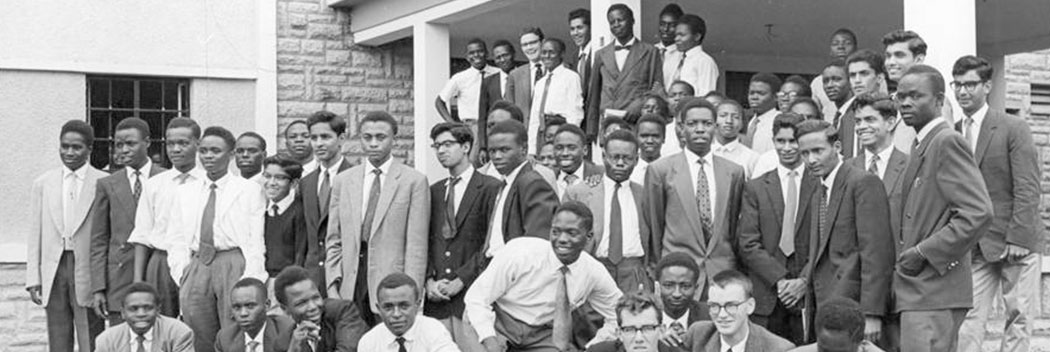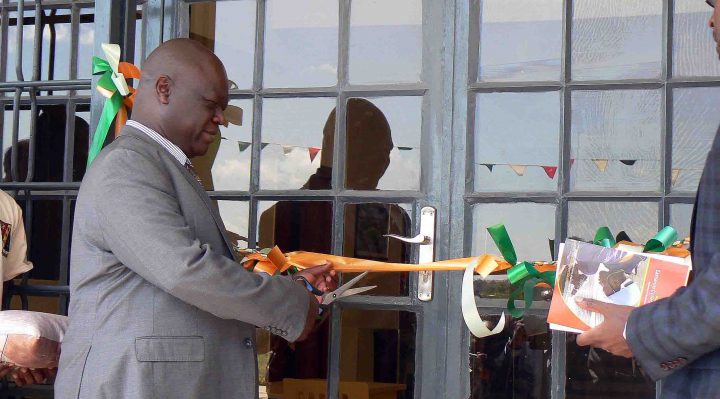A history of Strathmore Educational Trust, Registered Trustees
March 24, 2017
The guests sat on plastic white plastic chairs, shaded from the strengthening sun by low tents erected in the dusty esplanade. At one end of the tent, on a raised platform with its own awning, were seats behind a long table. They were for the main guests and organisers. The central one was reserved for the chief guest, who was to be the County Director of Education. Across from the tent, abutting the wall of the newly-completed workshop building, an unlikely band from the neighbourhood played instrumental music. The date 10th December 2015. The Eastlands College of Technology was about to be officially opened.
Following on over 10 years of work, the College was to be the latest addition to the initiatives of Strathmore Educational Trust. Its first, Strathmore College was started in 1961. Inspired by the Founder of Opus Dei, St Josemaria Escriva, a small band of men came to Kenya in 1958 and got to work setting up the school, to prepare students in their final years of secondary school for university. Because theirs would be country’s first multiracial school, they faced formidable opposition from the colonial government and the occupants of the neighbourhood they intended to set it up in. It became a very contentious matter, for it was feared it would have unknown implications on the segregationist policies of the British Empire itself. Eventually, reason won, and the school came into existence.
Once they had the school somewhat in place, Silvano Borusso, David Sperling, and the others, then took upon themselves the arduous task of getting students from all corners of the young country. Travelling countless hours on back-country roads through the Kenyan bush, they fished students from their homes and hauled them to Lavington, Nairobi, where the adventures of their lives would begin. But the drama didn’t end there. None of the students could pay for the education they were offered. So, the founders had to get scholarships for them. Far off in the future were the days when the second President of Kenya, Daniel Moi, would send his own son to Strathmore School.
As the days wore on and the dreams of the founders became concrete reality, the school started an accountancy course, the first class of which was composed of 25 students. Then a secondary school was added, followed by a primary school. In 1993, Strathmore College, complete with an Information Technology Centre which had since been established, split from the school and merged with Kianda College, an initiative of the Kianda Foundation. The five-acre plot of land in Madaraka, Nairobi, on which the new institution was based, had been donated in 1986 by the government of Kenya, at the request of the new Strathmore Educational Trust, Registered Trustees (SERT), which had come into existence a few months earlier.
In 2002, Strathmore started operating as a university and in 2008 was granted a university charter by the Kenyan government. Another initiative of the trust, Mbagathi Study Centre, a centre of formation for students and young professionals, had started operating next to Strathmore University a little before. The centre caters mostly to the students of the institution. Meanwhile, the Informal Sector Business Institute (ISBI), which would later become the Eastlands College of Technology, started operating from a small house in the Eastlands neighbourhood of Nairobi, under the auspices of SERT.
And so, on that December morning in 2015 as guests for the opening ceremony trickled into the compound of the new technical college, which had sprung up from the dust of Eastlands, another milestone awaited achievement. The compound was still dotted with chips of stone, left over from the construction of the workshop building which, at the time, was the sole structure in the fenced compound. But for many, it was a herald of more to come. Trees planted in the grounds barely peeked from under the long browning grass. The hems of the tents flapped in a light easterly wind blowing from the dry plains of Ukambani.

When the chief guest finally arrived, he delivered the County Governor’s message in a small speech. Then, assisted by Dr Caesar Mwangi, the chairman of SERT, he cut the tiny ribbon at the glass door of the workshop. A cheer and claps erupted from the small crowd. Photos were taken, a few were shared on social media, making a tiny blip on those modern platforms. It was a far cry from the lengthy trips along ruts through bushes that the founders of Strathmore had had to make to get students for their school in the 1960s. And yet it was radically similar. For, now, the journey would be through the alleyways of Nairobi, alleyways that didn’t even exist when those first students struggled through their first meals using forks and knives. The journey had always been the same.
